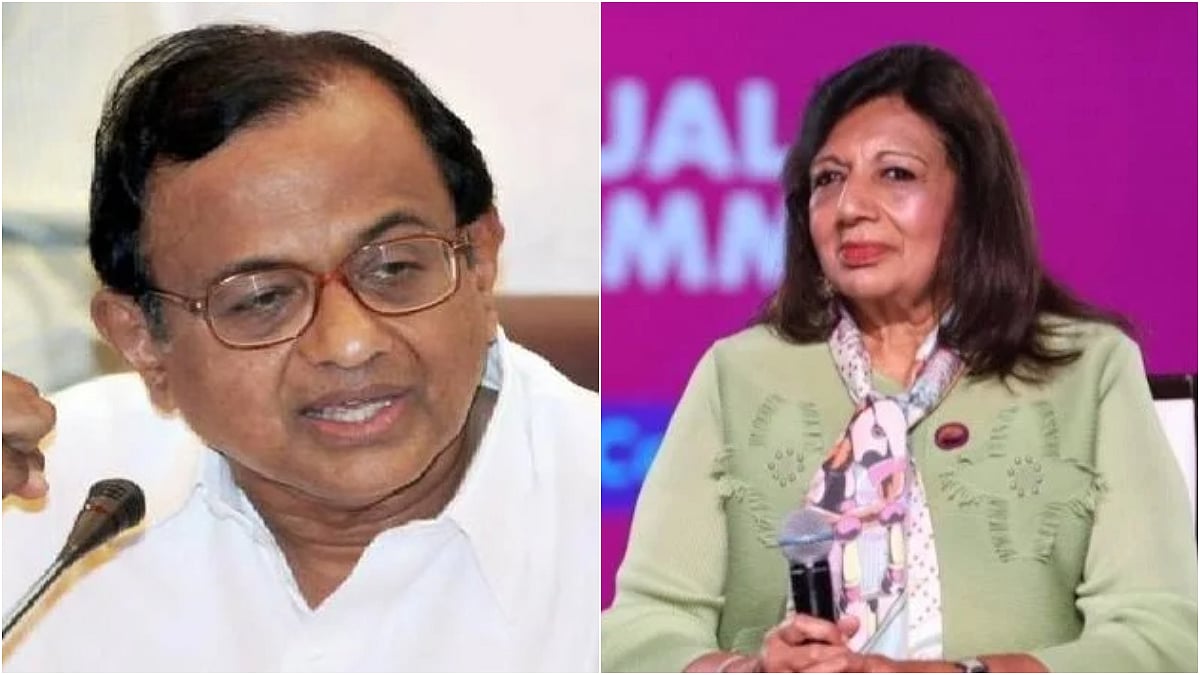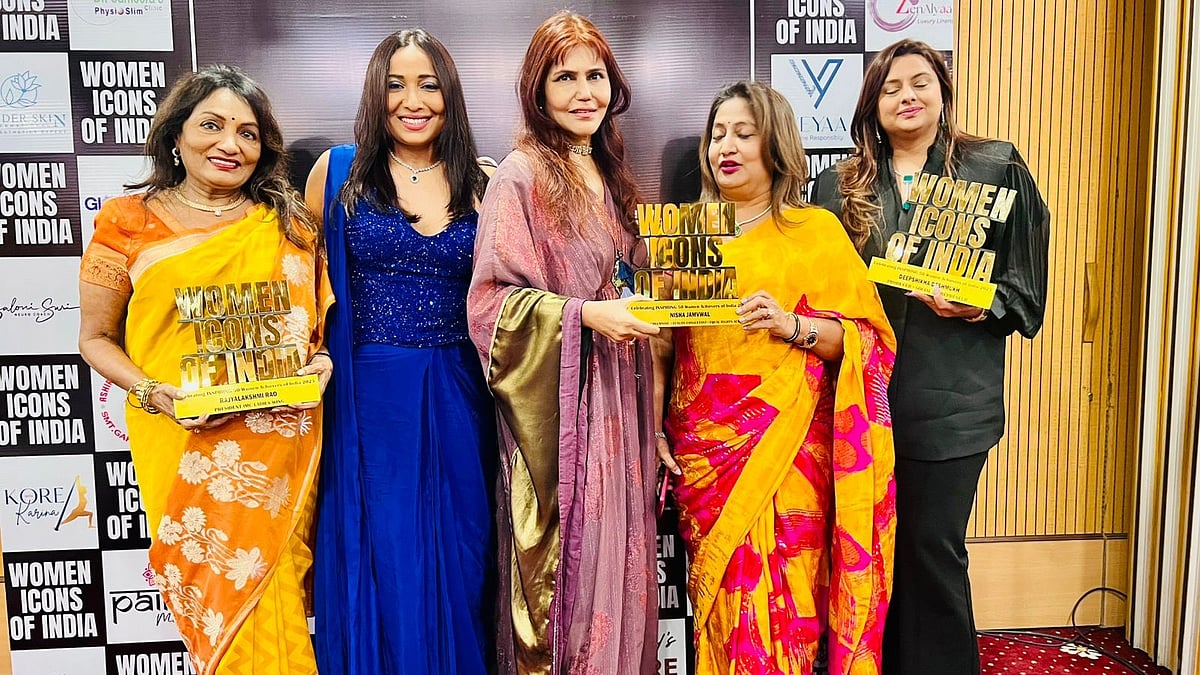Lord Ram symbolises obedience, discipline, profound joy and resilience, which represents the Indian spirituality, consciousness, and cultural ethos, in which we live every day. Those who admire Ram, discover a sacred space within themselves towards a spiritual journey, which has merged externally with the pilgrimage of Ram Mandir in Ayodhya Dham after the consecration ceremony.
The ancient concept of pran pratishtha signifies ‘infusing life into the deity’s idol’ with mantras and rituals performed by priests. It also involves musical offerings, like Raga Sewa, to energise the temple premises. The devotees present bhajan, kirtan, nritya-natak (dance and drama) to invoke the deity.
Looking at the historical references, the Raga Sewa is more than a 1000-year-old tradition. Still prevalent in the Nathdwara temple in Rajasthan, Dwarkadhesh temple in Mathura and Pushti Margeeya Swami Vallabhacharya Mathas. 'Achtachaap' Poets like Surdas, Nand Das, Kumbhan Das and Swami Hari Das sang in front of Srinathji and Banke Bihari, describing his bala leelas. While in South India, it is called Mandal Pooja wherein, musicians sing and dance in the central sanctorum of Vaitheeswaran temple, Lingaraj temple, Meenakshi temple, and Tirupathi Balaji to please the deity.
Shri Ram Raga Sewa at the Ram Mandir in Ayodhya has been conceptualised by renowned poet and author Yatindra Mishra on behalf of Ram Janam Bhoomi Teertha Kshetra Trust, which has curated and organised it. It is an extended programme towards 50 days of celebration of pran pratishtha, which began on January 26 and culminates on March 10. Raga Sewa is an integration of the North and South Indian traditions of worship, and should not be considered as a performance in front of the audiences.
Throwing light on Raga Sewa, Mishra explained, “The Raga Sewa is a pious ceremony as part of the ancient 'Nawa Vidha Bhakti’ parampara, wherein music and dance rituals come last. It is to invoke divine energy so that the devotees feel energised and revitalised after visiting the temple. The tradition has continued in Ayodhya for ages during the Kalewa ritual in all Ram mandirs including the Kanak Bhavan, where bhajan and kirtan are sung at the time of mangal aarti to invoke the deity.”
He further added, “Ram is omnipresent and a symbol of the cultural and spiritual unity of India. I took the best of the best artistes, who have been conferred with Padma Awards or Sangeet Natak Academy Award. Artistes were chosen from across India, across genres like classical music and dance, folk music, dance and drama. Sangeet Natak Academy, which has a vast repertory and recognition for arts, has greatly supported this initiative in logistics and getting artistes. We have finalised 50 artistes for the 50 days of pran pratishtha samaroh.”
Shri Ram Raga Sewa began with folk music of Ayodhya and bhajans by Malini Awasthi, Anup Jalota, Suresh Wadekar, Anuradha Paudwal and Shekhar Sen, Sunanda Sharma and Baul singer Purandardas. The line-up also includes renowned Hindustani Classical vocalists Ashwani Bhide Deshpande, Pandit Sajan Mishra, Flautist Ronu Majumdar, Chandra Prakash from Rajasthan presenting Haveli Sangeet to name a few. The Carnatic vocal presentations by Aruna Sairam and Ranjani Gayattri along with classical dance recitals by bharatanatyam exponents like veteran actor and politician Hema Malini and Vaijayanti Mala Bali, Kuchipudi dancer Swapna Sundari, Odissi dancer Sujata Mahapatra and Kalamandalam Jishnu Pratap presenting Kerala Koodiyattam, folk dancer Vedantam Ramlingam Shastri and many more. Raga Sewa has been an enthralling experience, while the performers have chosen various moods and themes to depict the life of Rama as a child, his youth, valour and grandeur as a noble king of Ayodhya, along with mythological tales. Bharatnatyam Exponent Hema Malini,as her tribute to Ramlala presented the well choreographed compositions 'Shri Madh Dashrath Nandan Ram' , 'Raghupati Raghav Raja Ram', 'Shri Ram Chandra Kripalu Bhajaman' depicting the very essence and events of Ramayana from Sita Haran, Ravan Vadha to Lord Ram's Raja Abhishek. She displayed Abhinaya, Natya and Bhav at its best, traversing from real to surreal.
Eminent folk and semi-classical vocalist Malini Awasthi alluded Ayodhya’s folk music and said, “Goswami Tulsidasji wrote two eminent treatises, one describing the Ram Katha in Ramcharitmanas, and another Ramlala Nehchu, which describes Ramlala’s childhood — right from the time of his nail cutting ritual to his wedding. Both the treatises were written in Awadhi, the local dialect of that era so that Ram Katha reaches the common man, since Sanskrit was the language of the kings and intellectuals.We find glimpses of folk music, folklore, folk traditions and customs, wedding songs and folk theatrics describing events from Ramlala's birth to his wedding. Musical forms like Sohar and Badhai songs are sung in an impromptu (Baiithaki Bulaiya) gathering, where the women gather and celebrate a child's birth."
She further adds," Tulsidasji is believed to be the inspiration behind the Ramleela, depicting the Ram Katha in its existing staged format. It has also kept alive our traditional values which the people of Ayodhya have kept in their hearts for the last 500 years. They see Ram as their own Son and Sita as their daughter-in-law. Ram is the root of our deep Indian philosophy about doing good to others, making your life useful and purposeful to being an idol king, a son, a husband, and a brother like Ram."
As part of her Raga Sewa, Awasthi sang a Badhayi 'Bajat Awadh Badhaiya Dasrath Ghar Sohar Ho', which not only celebrated the birth of Ramalala but also talks about his glory, and his greatness. She also sang a 'Tona 'Sakhiri Kehu Ram Ko Najar Na Lagawe', which prevents the newborn from any evil eyes, and another folk melody 'Ramji Ke Bahilwa Janamwa', 'Chlahu Kari Ayin Darsanwa', which suggests how the people of Ayodhya were eager to see the newborn Ramlala and make plans to visit his abode.

Anup Jalota |
Bhajan Samrat Anup Jalota, referencing the Ramncharitmanas said, “We find some references of Bhakti Sangeet in Ayodhya, as it states that when Luv and Kush came to meet their father, Lord Ram, they came singing devotional compositions in his praise. He gives reference to Haveli Sangeet prevalent in ancient temples which constituted mainly traditional Indian classical Dhrupad and Dhammar devotional compositions which were sung to invoke the deity.”
As part of his tribute to Ramlala, Jalota presented traditional devotional compositions and bhajans of Tulsidasji 'Aiso Ko Udar Jagmahi' in Raga Yaman', Rama Bhajan 'Dhanush Baan laike Hath Prabhu Ne Jab' in Raga Bageshri and 'Mandir Dekh Dare Sudama' in Raga Malkauns, which created a deep devotional aura in the mandapa.
In his Raga Sewa, eminent scholar, singer, and composer Shekhar Sen presented couplets (Chaupayis) from Ramcharitmanas and Shlokas from Valmiki Ramayana. He also sang popular bhajans of Tulsidas, along with some of his compositions like Godi main Ram mamta ki dekho chaiyan phooli na samayi kaushalya maiyan, creating a blissful environment in the mandapa.
“In all ancient temples of India, there were Natyashalas or Rangshalas, wherein all art forms including Hindustani and Carnatic classical music, Kathak, Bharatanatyam, Odissi, Manipuri, and Kuchipudi, all originated from the temples as we call them the ‘temple art forms’. They all depicted mythological tales from the Hindu religious scriptures. It is the beauty of only Sanatan Dharma that we have sages who did not go to the Himalayas to do tapasya, but they sat in front of the deity and sang for them. Swami Haridas took an oath that he would only sing in front of his lord Banke Bihari and not sing anything outside of the temple premises. Although Meera Bai was a devotee of Banke Bihari, her most famous bhajan is Payoji maine Ram ratan dhan payo, that’s the beauty of our tradition,” he said.
Throwing light on Sagun and Nirgun bhajan traditions, before signing off, he added, "Sagun refers to idol worship. So we worship Ram, Krishna and Durga in temples and sing bhajans dedicated to them. The other form is Nirgun, which is formless, and we have the greatest of Nirgun poets like Kabir, whose Guru gave him the Manra Ram, which he used as the name of the supreme power. Gurunanak Devji wrote several Nirgun bhajans like 'Ram Sumir Ram Sumir Ahi Tero Kaj Hai'. Meera Bai, who was a great Krishna devotee, but her most popular bhajan was 'Payoji maine Ram ratan dhan payo', that's the beauty of our spirituality and culture."












